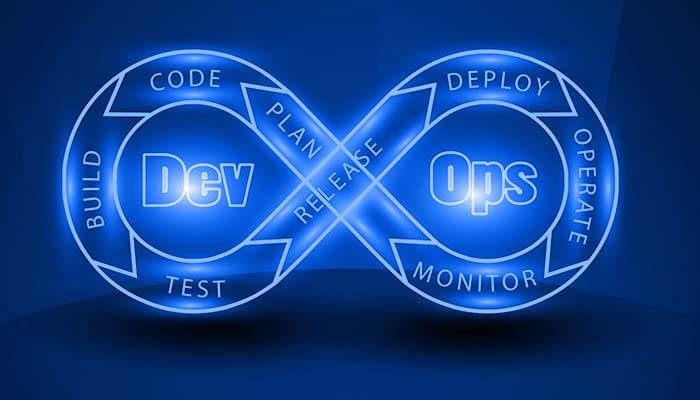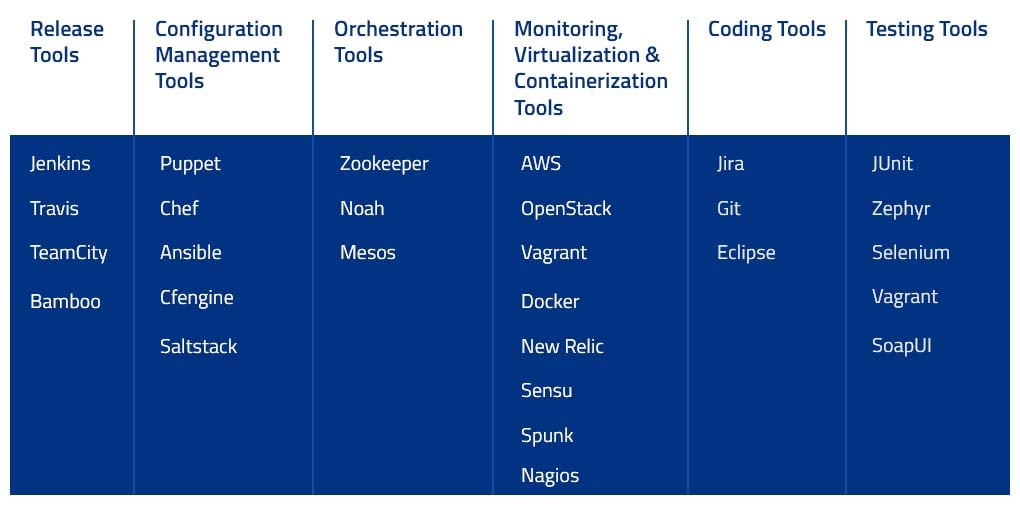Cloud and DevOps | 02 Mar 2022 | 11 min
What is DevOps | DevOps Explained

Earlier, agile software development methodology was the main philosophy when it came to developing and delivering products. However, there seemed to be a gap when it came to delivering working software to the market at the speed promised by the agile methodology. DevOps, which has become somewhat of a buzzword in the realm of software, proved to be a solution to this issue. DevOps as a methodology lies somewhere between developing and delivering a software. Let me explain my views about it.
In a SaaS-and-cloud obsessed world, enterprises are under constant pressure to implement newer features in the product and release them to end users as fast as possible. Tech companies have embraced agile development methodology to address the concerns surrounding faster release of products and have also succeeded to a certain extent. However, agile development principles only helped in developing a working software faster than any other process. What about releasing the product to market?
A typical agile scrum-based development has sprints of about two to four weeks. At the end of this sprint largely involving development, quality assurance, business analysis, etc., the product features agreed upon (sprint backlog items) are ready for production deployment. It is key to note that the product is production ready, but the actual production deployment may take some time. Typically, the deployment process may take an extra week which could involve lot of to and fro between the deployment team and the development team due to the complexity involved in any SaaS and cloud-based product.
On an average, the production release can take around three weeks for a two-week sprint-based development plan. If the deployment involves too many complexities, it is possible that the actual deployment time can prolong further. Some common practices involve creation of release sprints dedicated to release related activities. Such a release sprint may be planned after a certain number of sprints and generally involves releasing the product in bigger batches, thus defeating the purpose of the faster release of products.
DevOps is a newer chapter in the book of product engineering. It essentially strengthens agile principles by bringing in the Development team and the Operations team (responsible for production deployment) closer. Both teams collaborate to ensure tightly integrated development and deployment, resulting in seamless delivery. The DevOps processes will make sure that the new product features are integrated with the main product and released to market at a rapid pace. This means that at the end of a typical two-week sprint, the product is not only production-ready but also deployed to production release ready for end users. Take a look at this image that sums up the concept of DevOps:

What is DevOps?
Now, what does it take to implement the DevOps methodology?
We now know that bringing the developers and operations team to work together is the primary theme of the DevOps methodology. Tight integration of developers and operations would typically involve automation of configuration management, version controlling process, test scripts, creation of staging environment and production environment, among other things. With cloud computing used prominently for hosting, automating cloud related operations such as setting up virtual machines too becomes a prominent aspect of the DevOps implementation and automation plan.
Most cloud setup activities revolve around configuring appropriate virtual machines. Today, cloud platforms have matured, and many scripting options are available to automate these operations. With the new technologies like Containerization, adding another layer of abstraction and automation of OS level virtualization, the overhead costs of maintaining virtual machines are further can be drastically reduced. Though it was initially available on Linux platforms only, Microsoft and Docker partnered to come up with a Microsoft piece of the same.
In addition to available scripting options, we can consider using various DevOps tools for implementation and continuous delivery such as Chef, Puppet, and Ansible. When it comes to the Microsoft world, Team Foundation Server (TFS) along with Azure runbook will help automate Microsoft Azure related operations.
We know now that agile DevOps is evolving to become the go-to for when it comes to the promise of delivering a product to market. The operations team, which largely consists of Sysadmin, data, and business analysts as well as network engineers, has a key role to play in DevOps implementation. Their collaboration with the development team ensures that production deployment is smooth and accurate. Due to the distributed nature of the application architecture, there are too many elements to be considered for automaton. These range from code deployment to virtual machine creations. A wide variety of scripting may be required to automate them. This calls for a highly motivated and skilled operations team that can jump from one scripting language to another, depending upon the situation.
Here is an interesting video that will help you harness DevOps as a Service to future-proof your business!
Here is the impressive array of tools in the DevOps arsenal at a glance!

DevOps Tools
I have put together this list of some best practices you should definitely keep in mind if you are all set to adopt DevOps in the near future!
DevOps today is undergoing a transformative phase and evolving into DevOps as a Service that entails heavy reliance on cloud for further smoothening the relationship between the developers and operations team. Reach out to us at Nitor Infotech to analyse your company’s DevOps readiness and learn more about how you can tap into the immense potential of DevOps as a Service.

we'll keep you in the loop with everything that's trending in the tech world.
